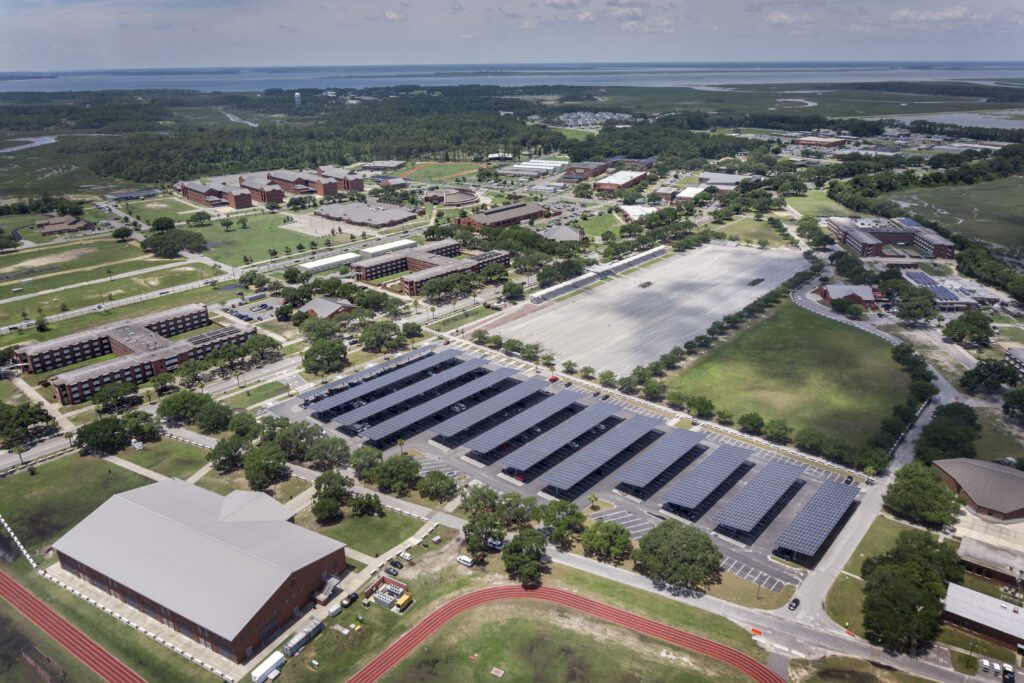How to Unleash the Climate Action Potential of the IRA
Throughout this past summer, we have seen some of the highest temperatures on Earth on record, and July was possibly the hottest month in more than a century. Wildfire smoke this year has blanketed the East Coast, marine heat waves have buffeted the Southeast, and Antarctic Sea ice has reached record lows.
Washington lawmakers can and should lead by example in reducing carbon emissions from federal operations. The federal government, the largest energy consumer in the U.S., has relied for decades on performance contracting to reduce emissions and improve the sustainability and resilience of its infrastructure. For more than 25 years, energy-saving performance contracts (ESPCs) have allowed agencies to partner with the private sector to generate billions of dollars in cost savings from reduced energy and water consumption. Under these third-party-financed contracts, the private sector designs, installs, operates and maintains infrastructure improvements, which generate the savings necessary to pay for themselves over time.
COMMENTARY
Public-private partnership ESPCs have a bipartisan history. Under former presidents George W. Bush and Barack Obama, these arrangements enjoyed congressional support as key enablers of facility modernization and emissions reduction. The President’s Performance Contracting Challenge, launched under President Obama in 2011, leveraged $4.2 billion in private capital over five years to reduce the federal government’s energy spending by $8 billion over the next 18 years in what was at that time the most aggressive effort ever to reduce federal government carbon emissions.

In signing Executive Order (EO) 14057 in 2021, President Biden directed federal agencies to go even further, delineating a range of ambitious sustainability targets, including a 50% reduction in building emissions by 2032 and net-zero emissions by 2045. Agencies have also been instructed to ramp up their use of ESPCs.The General Services Administration (GSA) has remained quite active in using performance contracting to accelerate emissions reduction across its portfolio (additionally, see this “GSA Investment in Facility Efficiency Improvements” graphic). The Department of Veterans Affairs (VA) has likewise maintained active ESPC contracting programs (additionally, see this “VA Investment in Facility Efficiency Improvements” graphic). Both these agencies have begun to use a requirement in the Energy Act of 2020 to implement at least half the cost-effective measures identified in energy audits using ESPC contracts (42 U.S.C. 8253(f)(4)). Other federal agencies should look to the GSA and the VA as models for their own climate action plans.
The clean energy tax credits and grant programs in the Inflation Reduction Act (IRA) amplify the potential of ESPCs to accelerate the federal government’s transition away from carbon-intensive infrastructure. The IRA does not allow federal entities to directly use new clean energy tax credits, but ESPCs enable the private sector to pass the benefit of these incentives when the government leverages energy sales agreements (ESAs) within ESPCs.
The ESPC ESA is the only contracting vehicle that allows for the third-party financed deployment of both government-owned building systems and privately owned distributed generation assets so the government can get the benefits of the IRA. GSA, the Environmental Protection Agency, the Drug Enforcement Agency, and other civilian agencies have initiated ESPC ESAs in the past three years to tap into funds appropriated in the IRA to accelerate the federal government’s clean energy transition with more comprehensive projects that enhance site resilience and go further toward net-zero goals than would otherwise be possible.

If the federal government hopes to achieve the goals of EO 14057, the Dept. of Defense—the largest energy consumer in the federal government and the entire country—must make these types of projects a priority. Having been directed during the Obama administration to dedicate resources to emissions reduction, the military services have gone through what many consider a course correction, focusing on mission assurance and energy resilience. ESPCs can deliver both emissions reductions and resiliency (as demonstrated by projects such as Ameresco’s ESPC with the U.S. Marine Corps Recruit Depot Parris Island, and ESPC ESAs can go even further on both fronts. To achieve the Biden administration’s goal of putting the government on a path to net-zero emissions, both the White House and the Pentagon should make use of this valuable tool to modernize our military installations, enhance their resilience, and reduce carbon emissions.
—Greg Caplan is Ameresco’s VP of Federal Business Development.